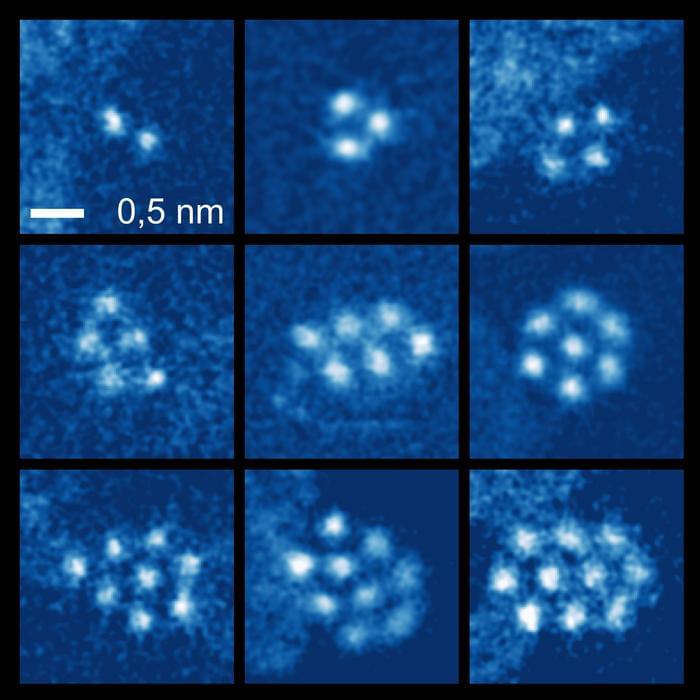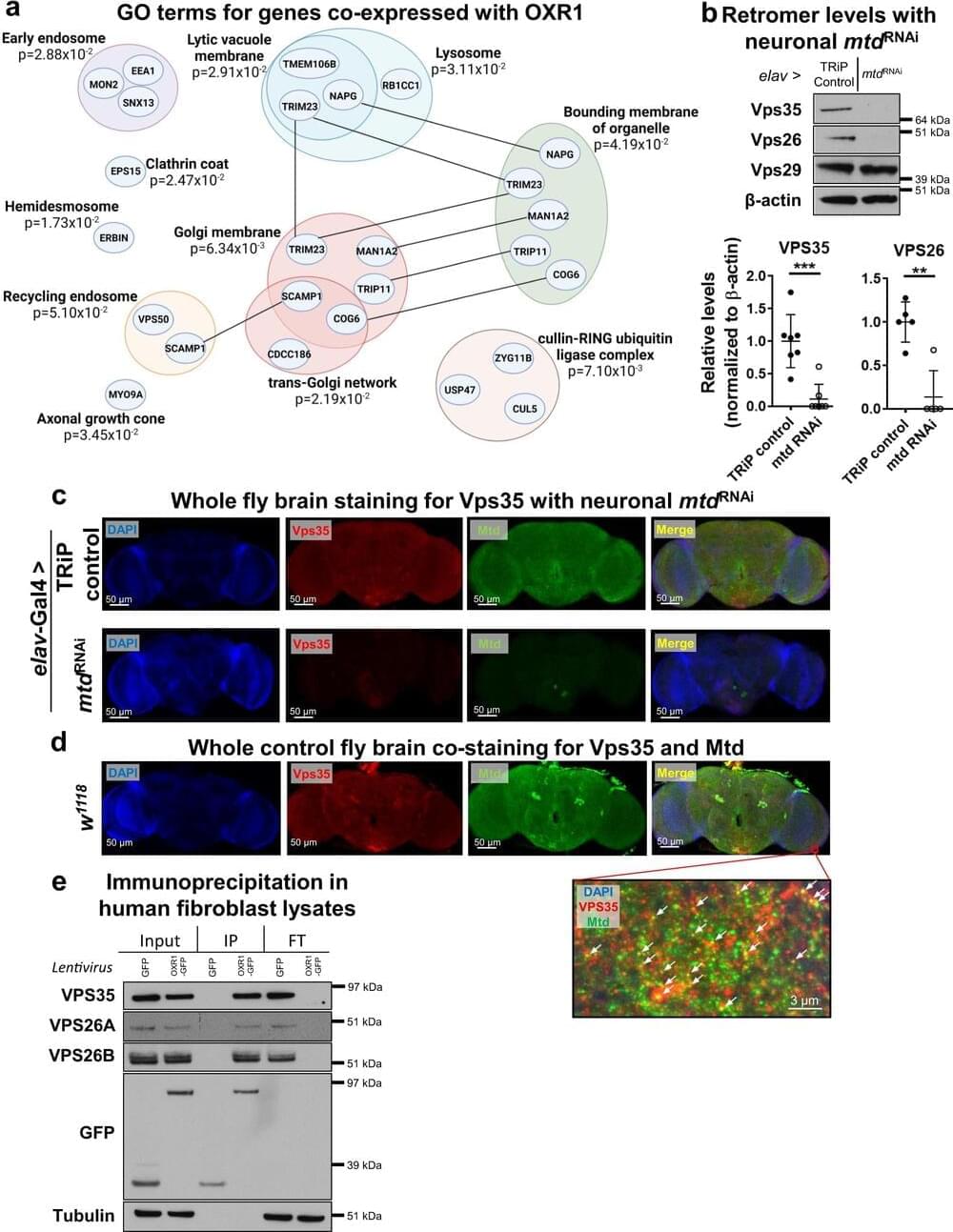Spanish colonizers enslaved the Lucayans, putting an end to their lineage by 1530.
Like several scientific discoveries, the researchers stumbled upon this result accidentally while conducting experiments irradiating graphene when they found that irradiated noble gases became trapped between two sheets of graphene, which results in the graphene forming small pockets where the atoms of the gases coalesce into small groups of atoms.
“We used scanning transmission electron microscopy to observe these clusters, and they are really fascinating and a lot of fun to watch,” said Manuel Längle, who is a PhD student at the University of Vienna and lead author of the study. “They rotate, jump, grow and shrink as we image them. Getting the atoms between the layers was the hardest part of the work. Now that we have achieved this, we have a simple system for studying fundamental processes related to material growth and behavior.”
Cancer and an enlarged prostate cause similar symptoms, so it’s important to understand the differences.
Fresh from announcing positive Phase 1 trial results for its inflammation-targeting drug candidate, Utah-based biotech Halia Therapeutics is now pursuing Phase 2 studies in a range of indications. The Salt Lake City company’s lead compound is an inhibitor of the NLRP3 inflammasome, a known driver of systemic chronic inflammation, which is linked to conditions including fibrotic disease, Alzheimer’s, Parkinson’s and many others.
Halia is taking a unique approach to the NLRP3 inflammasome by targeting the protein NEK7, which plays a key role in gene’s activity. In preclinical models, the company has shown its approach disrupts the formation of the NLRP3 inflammasome and promotes its disassembly once activated, reducing the overall inflammatory response. In its recent Phase 1 trial, in addition to showing positive safety and tolerability data, Halia’s drug demonstrated positive effects in blood samples taken from healthy volunteers, showing “over 90% suppression of multiple NLRP3-mediated cytokines and chemokines.”
Longevity. Technology: Chronic inflammation is a frequent topic of discussion in longevity circles. The term “inflammaging” refers to the increase of inflammatory cytokines in our bodies as we age, which is linked to chronic morbidity, disability, frailty and premature death. While there is no doubt that Halia believes that its approach can potentially impact many diseases, does the company have aging itself in its sights? We caught up with CEO Dr David Bearss to find out.
Medullary Thyroid Cancer
Posted in biotech/medical
Have you heard of (MTC)? While ThyroidCancer is fairly common, there are four different types of thyroid cancers and MTC is the rarest type making up 3% of 4% of all thyroid cancers. Check out our expert reviewed summary for more.
Medullary thyroid cancer, or MTC, is a cancer that forms in the thyroid. The thyroid is a gland located in the front of your neck, just below the Adam’s apple. It is responsible for sending out hormones to the rest of your body. The inside of the thyroid is called the medulla. The medulla contains special cells called parafollicular C cells that produce and release hormones. MTC happens when the C cells become cancerous and grow out of control. MTC may also be called medullary thyroid carcinoma.
How common is medullary thyroid cancer?
Thyroid cancer is fairly common. There are four different types of thyroid cancers and MTC is the rarest type making up 3% to 4% of all thyroid cancers. About 1,000 people are diagnosed with MTC each year in the U.S.
As the average lifespan of people with Down Syndrome (DS) has more than doubled over the past 40 years, more people with DS are being considered for total hip and knee replacements.
Patients with Down syndrome are not more likely to need follow-up surgery after a total knee replacement or total hip replacement. But they are at higher risk.
MSU researcher Carolina de Aguiar Ferreira is changing the way we fight cancer. She is precisely targeting cancer cells with diagnostics and therapies using radioisotopes produced by FRIB, the world’s most powerful heavy-ion accelerator.
Using breakthrough tools to target cancer led Carolina de Aguiar Ferreira to MSU, where she found a community of scientists who discover better together.
Scientists have found a star unlike any other one recorded—which may change our understanding of how stars die.
This unusual star, 13,000 light-years away, has an elemental makeup that suggests it was formed in the aftermath of a more massive star exploding in a way that no existing theory seems to explain. According to everything else we know, the original star should have turned into a black hole instead.
The discovery may rearrange our picture of how stars explode and how some of the heavier elements are made. It also helps us better understand what the first generation of stars in the universe may have looked like.
Restricting calories is known to improve health and increase lifespan, but much of how it does so remains a mystery, especially in regard to how it protects the brain. Buck Institute for Research on Aging scientists have uncovered a role for a gene called OXR1 that is necessary for the lifespan extension seen with dietary restriction and is essential for healthy brain aging.
“When people restrict the amount of food that they eat, they typically think it might affect their digestive tract or fat buildup, but not necessarily about how it affects the brain,” said Kenneth Wilson, Ph.D., Buck postdoc and first author of the study, published in Nature Communications. “As it turns out, this is a gene that is important in the brain.”
The team additionally demonstrated a detailed cellular mechanism of how dietary restriction can delay aging and slow the progression of neurodegenerative diseases. The work, done in fruit flies and human cells, also identifies potential therapeutic targets to slow aging and age-related neurodegenerative diseases.
Part 2: This is the second of a three-part series on how Stanford Medicine researchers are designing vaccines that protect people from not merely individual viral strains but broad ranges of them. The ultimate goal: a vaccine with coverage so broad it can protect against viruses never before encountered.
The series opener focused on why having vaccines that cover not just one strain of a single virus, but many, could be an invaluable advance. Although Part 1 focused on the COVID-19-causing SARS-CoV-2 as a textbook example, that strain-spewing microbe is just one of many viruses to worry about.
Take, for instance, the old steady: influenza.









